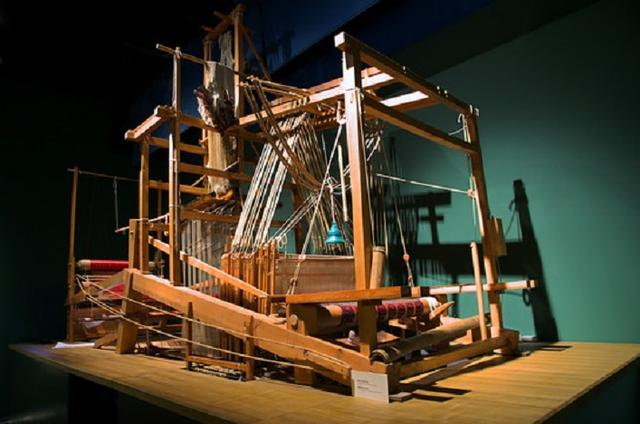Introduction
Weaving machines have been used for more than 200 years to create textiles. The first jacquard loom was invented in 1801 by Joseph-Marie Jacquard and improved upon by other inventors over the following decades. These machines are still used today to create intricate patterns on cloth or other materials, such as wool and silk threads.
The first french weaving machine was invented in 1733. It wasn't very successful, though, because it couldn't consistently turn out the same pattern.
The first French weaving machine was invented in 1733. It wasn't very successful, though, because it couldn't consistently turn out the same pattern. The inventor of this machine was Jean-Pierre Blanchard, a French engineer who worked for Louis XV as an advisor on engineering and technology issues.
Blanchard's machine used two sets of rollers connected by gears to spin the warp threads through a loom frame with heddles hanging from each side of the loom headpiece. This design allowed for more flexible weaving patterns than previous ones because you could change which set of rollers was moving at any time without having to stop everything and reweave your workpiece!

The first reliable jacquard loom was created by Joseph-Marie Jacquard in 1801.
The first reliable Jacquard loom was created by Joseph-Marie Jacquard in 1801. He developed a system of punched cards that were used to control the pattern on the loom. These cards were called "Jacquard cards."
Jacquard's loom was used to create intricate patterns on textiles, such as brocade and lace.
By 1820, about a dozen jacquard looms were operating in the United States.
The Jacquard loom was invented in 1801 by Claude-Étienne Lantier and Joseph Marie Jacquard. It allowed for the creation of textile patterns and designs on a woven cloth, which became popular in the United States after it was introduced there in 1820.
The Jacquard loom was used to create textile patterns and designs that were then transferred onto woven fabrics. The first step involved cutting out the shape or design from paper or cardboard using a patterned roller attached to one end of each bobbin thread; this could be done manually or with an automatic machine (called an embroidery machine). Then, individual threads were sewn into place on top of each other like a chain by following precise instructions printed on cards known as patens—these instructions were related to how much tension should be applied during each stage so that when everything came together at once it would form one complete piece rather than separate pieces like those produced by hand-sewing alone
Modern weaving machines have been used since around 1800 to create textile patterns and designs.
Modern weaving machines have been used since around 1800 to create textile patterns and designs. The first weaving machine was invented in 1733, but it was not until 1801 that a reliable jacquard loom was created. In those days, people used hand looms to weave cloth on an uneven surface like straw mats or straw ropes. They also made use of pins to secure the warp threads together, but these methods were inefficient and time-consuming because they required more effort than modern mechanical systems can offer us today.
The first modern weaving machines were invented by Charles Babbage (1791–1871) during his tenure at Cambridge University in England around 1830; however they weren't introduced into industry until 1853 when James Hargreaves installed one into his cotton mill near Manchester which became known as Hargreaves' Spinning Jenny Company Ltd."
Weaving machines have been used for more than 200 years to create textiles.
The history of the weaving machine spans more than 200 years. In fact, it has been used for more than that time to create textiles. And not just any textiles—weaving machines are used to make cloths of all kinds and sizes.
Weaving machines come in many types and varieties: there are horizontal looms, vertical looms and computer-controlled systems that can be programmed by a human operator or programmed by software.
Conclusion
Weaving machines have been used for more than 200 years to create textiles. They are still used today in many different industries, such as clothing and carpet manufacturing. The invention of the first jacquard looms in 1801 led to a new era of textile production that continues today!




